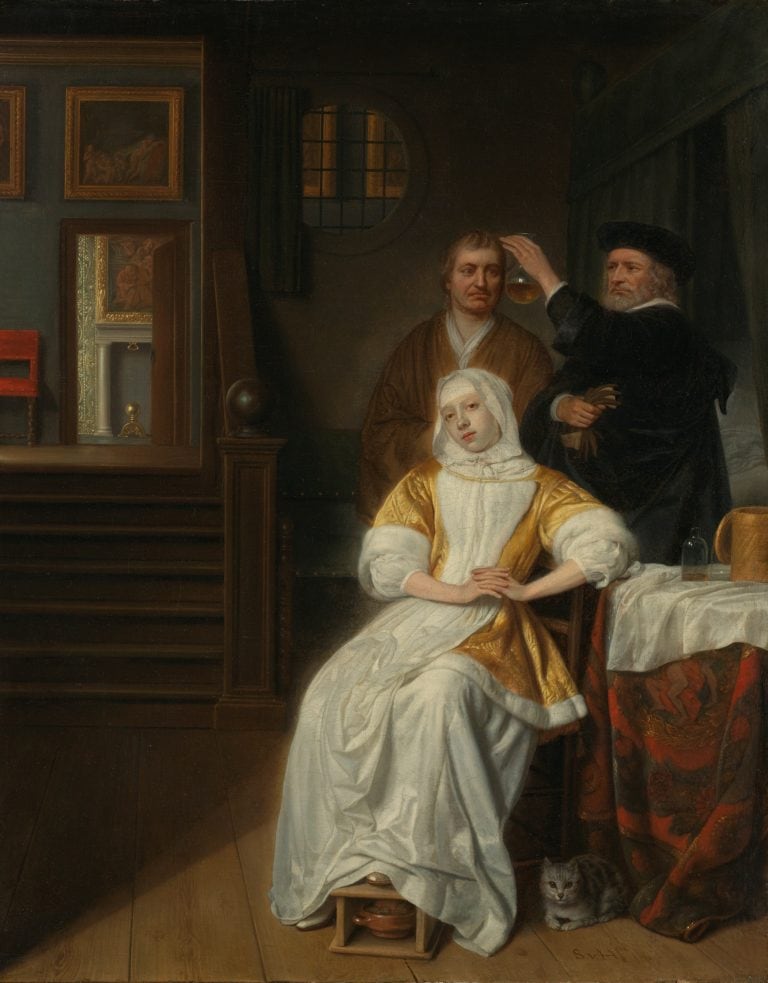Strategies for Thriving with Just Right OCD

Have you ever felt the overwhelming urge for everything to be “just right,” down to the smallest detail? Imagine that feeling magnified to an extreme, where even the slightest imperfection sends waves of anxiety coursing through your veins.
Welcome to the world of “just right” OCD, a captivating subtype of obsessive-compulsive disorder that delves deep into the human psyche’s quest for perfection.
In a world where chaos and disorder reign, “just right” OCD emerges as a captivating journey into the intricate workings of the mind, where every action and arrangement holds the key to unlocking a sense of tranquillity.
Join us as we delve into the fascinating realm of this obsessive need for perfection and explore the avenues of treatment that offer hope and liberation.
What is just right OCD
“Just right” OCD is a subtype of obsessive-compulsive disorder (OCD) where individuals experience a pervasive need for things to feel precisely perfect or “just right.” This need for perfection can manifest in various ways, including the arrangement of objects, completion of tasks, or adherence to specific routines.
Individuals with “just right” OCD often find themselves feeling distressed or anxious when things do not meet their exacting standards or when they are unable to achieve the desired sense of completion.
For example, “just right” OCD people may feel compelled to arrange objects symmetrically on a table, adjust their clothing repeatedly until it feels perfectly comfortable, or engage in rituals to ensure tasks are completed in a specific sequence.
These rituals and behaviors serve as coping mechanisms aimed at reducing the intense discomfort and anxiety associated with the sense of incompleteness or imperfection.
The obsession with achieving perfection or the feeling of things being “just right” can significantly interfere with daily functioning, leading to disruptions in work, relationships, and overall quality of life.
Individuals may spend excessive amounts of time and energy performing rituals or seeking reassurance to alleviate their distress, further exacerbating the impact of intrusive thoughts and just right obsessions.
Common Obsessions
In “just right” OCD, individuals experience obsessions related to achieving a sense of perfection or completion. These obsessions often revolve around specific themes or areas of concern, leading individuals to engage in compulsive behaviors to alleviate their distress.
Some common obsessions in “just right” OCD examples include:
Symmetry and Order
Obsessions related to arranging objects symmetrically or in a specific order. Individuals may feel compelled to line up items perfectly or ensure that things are evenly spaced.
Exactness and Precision
Obsessions centered around precise measurements, alignments, or placements. Individuals may become fixated on achieving exact measurements or ensuring that objects are positioned with meticulous accuracy.
Completeness
Obsessions about tasks or actions feeling incomplete or unfinished. Individuals may feel compelled to repeat actions until they achieve a subjective sense of completeness or closure.
Sensory Comfort
Obsessions related to sensory experiences, such as clothing feeling uncomfortable or textures not feeling “just right.” Individuals may engage in repetitive behaviors to adjust clothing or seek out specific textures to alleviate discomfort.
These obsessions can vary in intensity and specificity from person to person, but they all share a common theme of an overwhelming need for things to feel “just right” or perfect.
Common Compulsions
In “just right” OCD, individuals engage in compulsions or repetitive behaviors as a means of alleviating the distress or anxiety caused by their obsessions related to achieving perfection or completeness.
These compulsions are aimed at bringing about a sense of order, symmetry, or exactness in their environment or within themselves. Some common compulsions in “just right” OCD include:
Repetitive Arranging and Rearranging
Compulsions involving the repetitive arranging and rearranging of objects until they feel “just right.” Individuals may spend significant amounts of time adjusting the placement of items to achieve a sense of symmetry or order.
Counting and Checking
Compulsions involving counting objects or checking items multiple times to ensure they meet certain criteria. Individuals may count or check things repeatedly until they feel satisfied that they have achieved the desired outcome.
Touching and Tapping
Compulsions involving touching or tapping objects in a specific sequence or pattern to alleviate anxiety. Individuals may feel compelled to touch objects a certain number of times or in a particular order to achieve a sense of completeness or closure.
Repeating Actions
Compulsions involving the repetition of actions until they feel “just right.” Individuals may feel compelled to repeat tasks or behaviors multiple times to achieve a subjective sense of perfection or completion.
Ordering and Organizing
Compulsions involving the meticulous ordering and organizing of items according to specific criteria. Individuals may organize objects based on color, size, or other attributes in an attempt to achieve a sense of orderliness and control.
What triggers Just Right OCD?

Perfectionism OCD can be triggered by a variety of factors, including individual predispositions, environmental stimuli, and life events. While triggers can vary from person to person, some common factors that may trigger “just right” OCD include:
Perfectionistic Personality Traits
Individuals with pre-existing perfectionistic tendencies may be more susceptible to developing “just right” OCD. A perfectionistic mindset can predispose individuals to feeling a heightened need for things to be orderly, precise, or perfect.
Stressful Life Events
Significant life stressors such as academic pressure, work-related stress, relationship difficulties, or major life changes can trigger or exacerbate symptoms of OCD, including “just right” OCD. Stressful events can increase feelings of anxiety and lead individuals to seek control through compulsive behaviors.
Trauma
Traumatic experiences, whether physical, emotional, or psychological, can trigger or contribute to the development of OCD symptoms. Trauma can disrupt a person’s sense of safety and stability, leading to increased feelings of anxiety and a need for control.
It’s important to note that while triggers can contribute to the onset or exacerbation of “just right” OCD symptoms, the disorder is complex and multifaceted, and its development is influenced by a combination of genetic, biological, psychological, and environmental factors
What causes just right OCD
The exact cause of “just right” OCD, like other subtypes of obsessive-compulsive disorder such as tourettic OCD, is not fully understood. However, research suggests that a combination of genetic, neurobiological, environmental, and psychological factors may contribute to the development of the disorder.
Here are some key factors that may play a role:
Genetics
There is evidence to suggest that genetics play a significant role in the development of OCD, including the “just right” subtype.
Individuals with a family history of OCD are more likely to develop OCD themselves, indicating a genetic predisposition. However, specific genes associated with OCD are still being identified and studied.
Brain Chemistry and Neurobiology
Imbalances in certain neurotransmitters, such as serotonin, dopamine, and glutamate, are believed to contribute to OCD symptoms.
Dysfunction in brain circuits involved in decision-making, impulse control, and repetitive behaviors may also play a role in the development of OCD, including the “just right” OCD subtype.
Environmental Factors
Environmental factors, such as stress, trauma, and exposure to childhood adversity, can increase the risk of developing OCD.
Stressful life events or situations may trigger the onset of symptoms or exacerbate existing symptoms in individuals predisposed to the disorder.
Comorbid Factors
Comorbid diseases such as other anxiety disorders, tic disorder, social anxiety disorder are believed to have a negative effect on just right ocd symptoms and all OCD subtypes.
How to Treat just right OCD

Treating “OCD typically involves a combination of therapy, medication, and lifestyle changes aimed at reducing obsessive thoughts and compulsive behaviors and improving overall functioning and quality of life.
Here are some common approaches to treating “just right” OCD:
Exposure and Response Prevention (ERP)
ERP is a type of CBT specifically designed for OCD and other mental health conditions including tic disorders. It involves gradually exposing individuals to situations or triggers that provoke obsessions while preventing them from engaging in compulsive behaviors.
Over time, this type of OCD treatment helps individuals learn to tolerate the distress caused by obsessions without resorting to compulsions.
Cognitive Restructuring
This involves challenging and changing irrational or unhelpful thoughts and beliefs that contribute to OCD symptoms.
By identifying and replacing these thoughts with more rational and realistic ones, individuals can reduce the frequency and intensity of obsessions and compulsions.
Selective Serotonin Reuptake Inhibitors (SSRIs)
SSRIs are a type of antidepressant commonly used to treat OCD. They work by increasing levels of serotonin in the brain, which can help reduce just right symptoms of OCD, including obsessions and compulsions.
Exposure
In ERP, individuals are gradually exposed to situations, objects, or thoughts that trigger their obsessions. These exposures are carefully planned and conducted in a systematic way, starting with situations that provoke mild anxiety and gradually progressing to more challenging ones.
For example, someone with “just right” Obsessive compulsive disorder who obsesses about the arrangement of objects may be gradually exposed to situations where objects are deliberately placed slightly out of order.
Response Prevention
During exposure, individuals are instructed to refrain from engaging in their usual compulsive behaviors or rituals. This is known as response prevention and is guided by a licensed clinical psychologist or a mental health professional.
By preventing the individual from engaging in compulsions, ERP aims to break the cycle of obsessions and compulsions and help the individual learn that their anxiety will decrease over time without engaging in rituals.
Hierarchy Development
Before starting ERP, the individual and therapist work together to create an exposure hierarchy.
This involves identifying specific situations or triggers related to the individual’s obsessions, ranking them in order of anxiety or discomfort, and gradually exposing the individual to these situations from least to most anxiety-provoking.
In Vivo and Imaginal Exposures
Exposure exercises in ERP can be conducted in real-life situations (in vivo exposure) or through imagination (imaginal exposure).
In vivo exposures involve facing feared situations directly, while imaginal exposures involve vividly imagining feared situations. Both approaches can be effective in helping individuals confront their fears and reduce avoidance behaviors.
Conclusion
In conclusion, “just right” OCD, a subtype of obsessive-compulsive disorder, manifests as an intense need for increased to perfection and completeness.
Rooted in a complex interplay of genetic, environmental, and psychological factors, its treatment typically involves a blend of therapy, medication, and lifestyle adjustments. This also applies to other ocd subtypes.
The gold standard therapy, Cognitive Behavioral Therapy (CBT) specifically Exposure and Response Prevention (ERP), helps individuals confront fears and reduce compulsive behaviors.
With proper support, those affected can learn to manage symptoms and reclaim control over their lives, fostering a path towards improved well-being and quality of life.

